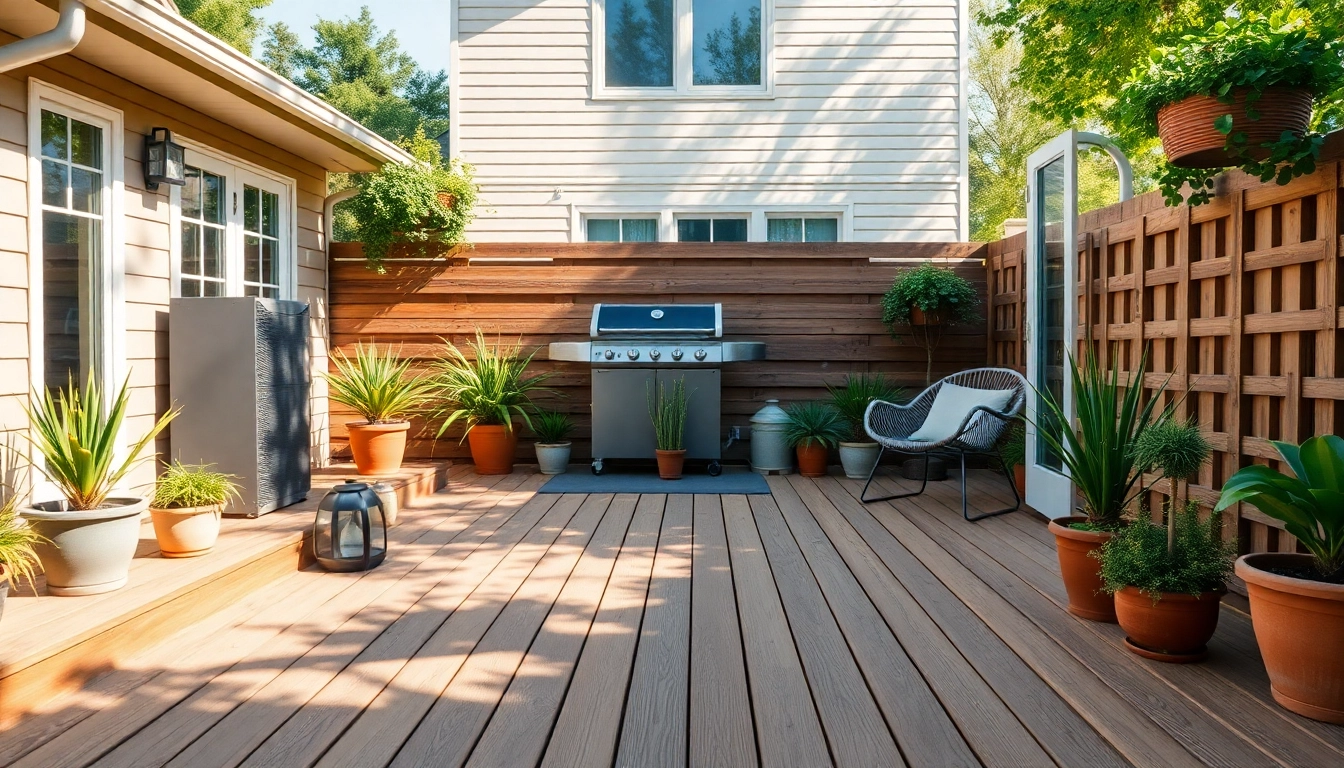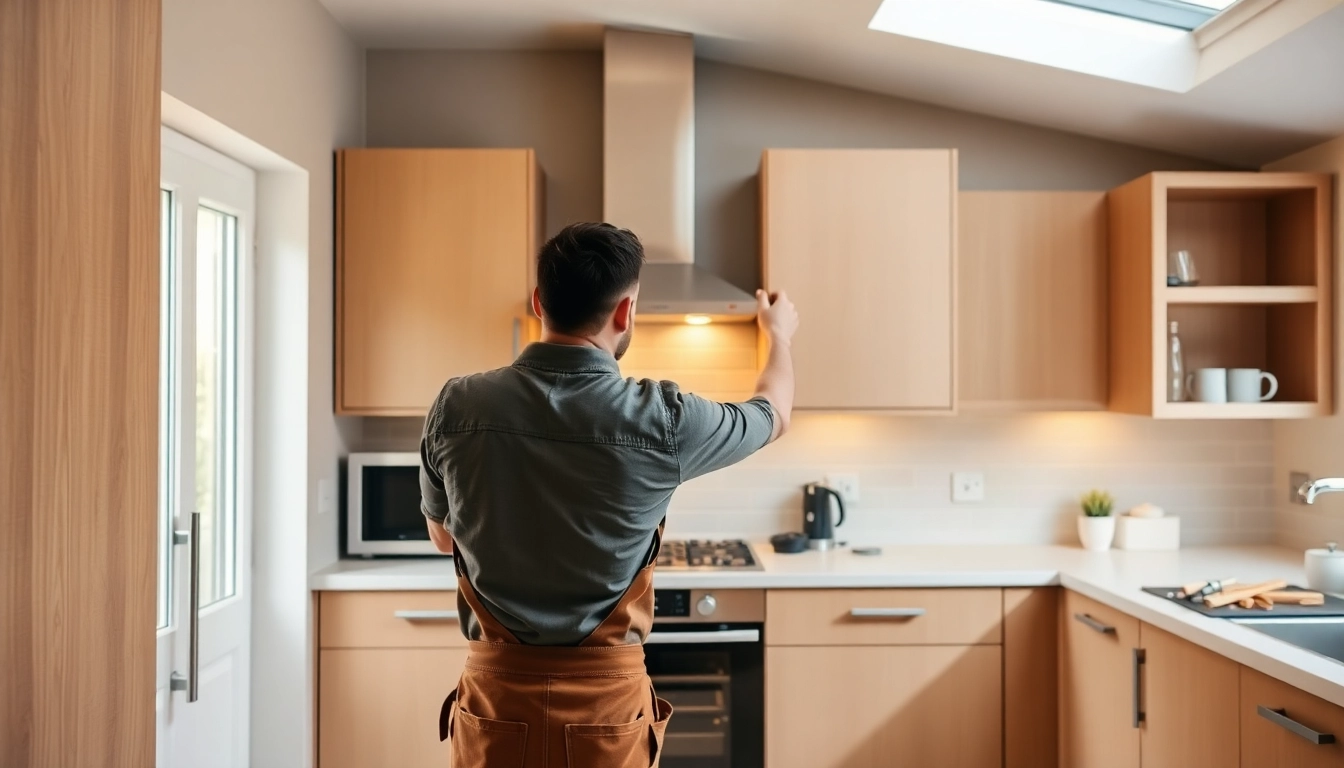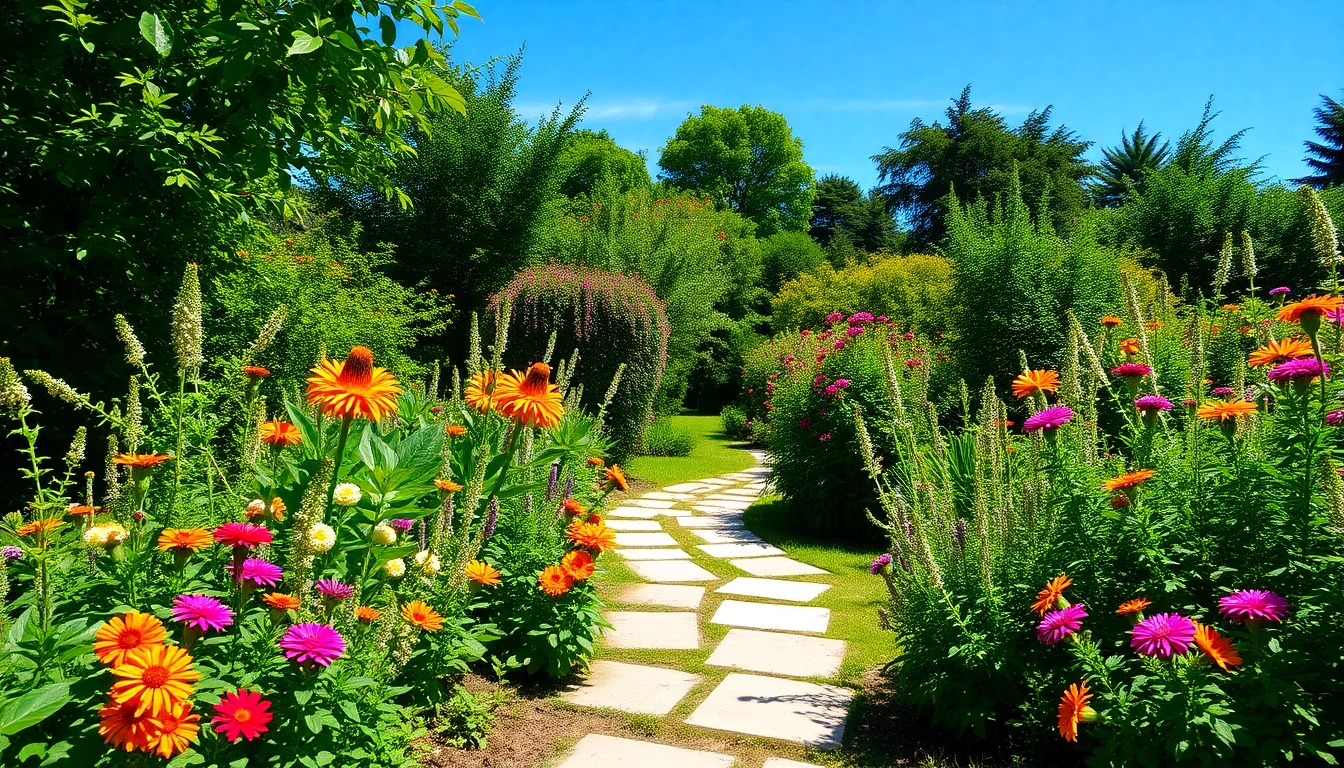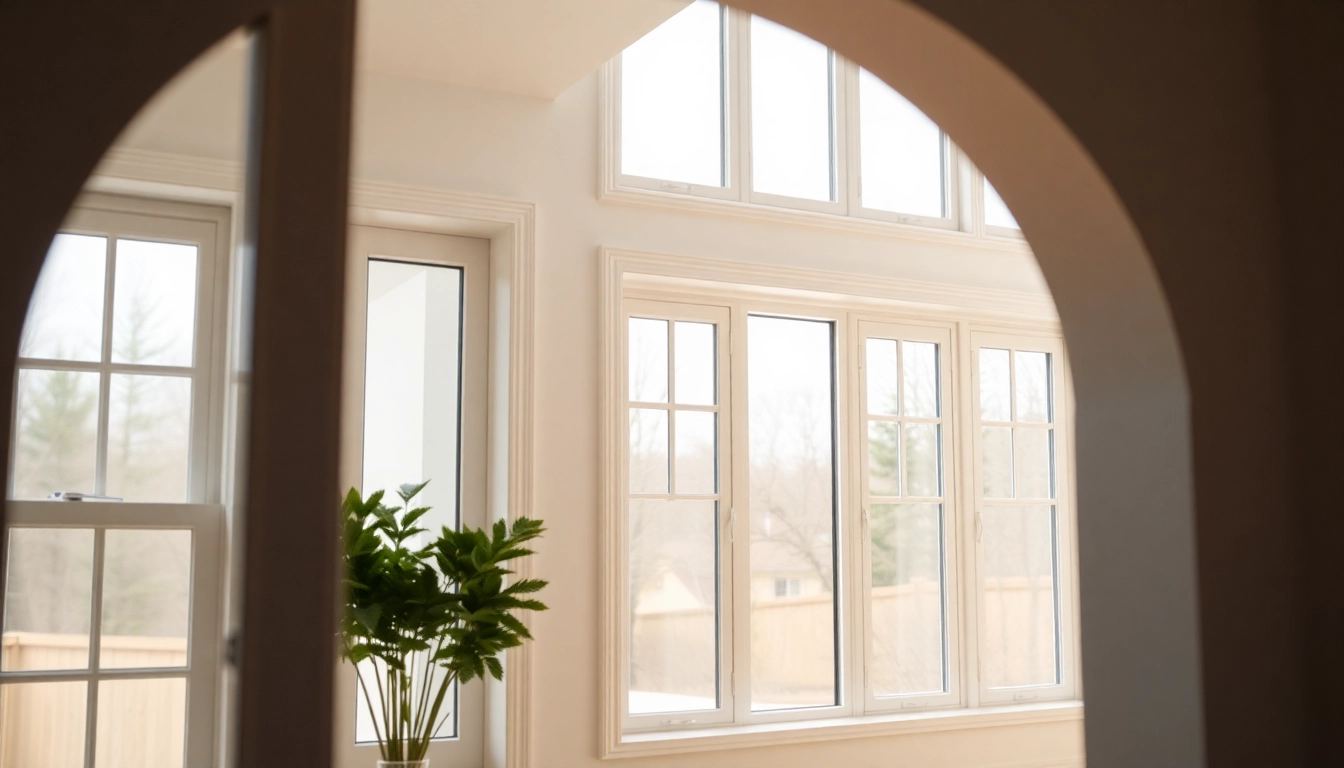Understanding Deck Construction Basics
What is Deck Construction?
Deck construction is the process of creating a flat, horizontal structure that is usually elevated from the ground and attached to a building. These outdoor spaces serve as extensions of your home, allowing for an array of activities ranging from dining and lounging to entertaining guests. A well-constructed deck can elevate your home’s aesthetic and functional value while also providing a great return on investment as a desirable feature for potential buyers.
Materials Needed for Deck Building
When planning for deck construction, selecting the right materials is crucial. The primary materials typically include:
- Lumber: The most common choice is pressure-treated wood, although composite materials and hardwoods like cedar and redwood are also popular.
- Hardware: This includes screws, nails, joist hangers, and brackets, which secure the structural elements together.
- Decking Boards: Typically made from wood or composite materials, these cover the frame and provide a surface to walk on.
- Concrete: Used for the footings and supports, concrete footers are essential for stabilizing your deck.
- Railing Systems: Depending on the deck’s height, railings are necessary for safety and come in various styles and materials.
Key Regulations and Compliance in Deck Construction
Understanding the regulations governing deck construction is vital to ensure safety and legal compliance. These regulations typically include local building codes, homeowner association guidelines, and zoning laws. Before commencing your project, it’s essential to obtain the necessary permits, which often require detailed plans and specifications. Failing to adhere to these guidelines can result in fines or necessitate costly modifications later on.
Planning Your Deck Design
Choosing the Right Location
The location of your deck is one of the most critical aspects of its design. Factors to consider include:
- Sunlight Exposure: Determine how much sunlight your deck will receive. If you prefer a shaded area, consider how tree cover can affect the space.
- Proximity to Structures: Assess how the deck will connect with your home and any surrounding structures, ensuring easy access.
- View: Choose a location that maximizes your scenic views or creates a private retreat.
Deck Size and Shape Considerations
The size and shape of your deck should be tailored to your needs and the layout of your yard. Common shapes include:
- Rectangular
- Multi-level: Provides visual intrigue and can accommodate varying uses.
- Curved Designs: Offers a unique look, blending better with landscaping while also adding a touch of elegance.
Regardless of size or shape, ensure ample room for furniture and movement.
Design Ideas for Unique Decks
Your deck can reflect your personal style and cater to your lifestyle. Consider these design ideas:
- Built-in Seating: Incorporate benches or built-in seating areas to maximize space and comfort.
- Outdoor Kitchens: Equip your deck with a grill, sink, and countertop for entertaining.
- Planters and Greenery: Adding planters can soften the space, promote privacy, and create a natural ambiance.
Step-by-Step Guide to Deck Construction
Preparing the Site for Construction
Preparation is key to a successful build. Start by clearing the area of any debris, vegetation, or existing structures. Use stakes and string to delineate your deck’s perimeter and ensure it’s level. It’s wise to check if the ground is stable and make adjustments to the terrain as needed.
Foundational Elements of Deck Building
The foundation is crucial for stability. Common foundational designs include concrete footings installed below the frost line or deck blocks for ground-level decks. Plan for sufficient spacing between supports to prevent sagging and ensure a solid footpath across the deck.
Framing and Support Structures
Once the foundation is set, constructing the frame involves laying down beams and joists. Follow these steps:
- Start by attaching a ledger board to the exterior wall, secured with lag bolts.
- Install vertical posts to connect the ledger to the footing below, ensuring they are plumb and in line with building codes.
- Use beams to connect the posts and provide support for the joists, which will support the decking boards.
Finishing Touches and Maintenance
Choosing Decking Finishes
The choice of decking finish can profoundly affect the durability and beauty of your deck. Options include:
- Stains and Sealants: Enhance the natural wood grain while protecting against weather elements.
- Paints: Offers color customization but requires more maintenance over time.
- Composite Decking: Comes pre-finished and is resistant to fading, providing a low-maintenance option.
Maintenance Tips for Longevity
To ensure your deck continues to look great and perform well, regular maintenance is crucial. Some best practices include:
- Cleaning your deck annually to remove dirt, mold, and mildew.
- Inspecting for signs of damage or loosening screws, addressing issues promptly to prevent larger remediation later.
- Reapplying stain or sealant every 1-3 years, depending on exposure and material type.
Enhancing Your Deck with Decor
Enhance your deck’s appearance with thoughtful décor. Ideas include:
- Outdoor Rugs: Add texture and define spaces.
- Lighting: Use string lights or lanterns to create ambiance for evening gatherings.
- Furniture: Choose comfortable and weather-resistant pieces that complement your overall design.
Cost Considerations in Deck Construction
Estimating Your Deck Building Budget
Creating a realistic budget involves understanding the costs associated with materials, labor, and permits. Here’s a basic guide to help you estimate:
The price of materials can dramatically vary; for instance, pressure-treated wood is generally less expensive than composite decking. National averages suggest that building a deck costs between $3,920 and $10,540, depending on size and materials used.
Cost-Saving Tips for DIY Deck Projects
If you plan to undertake the project yourself, there are several ways you can save money:
- Planning for a simpler design that uses fewer materials will cut down expenses.
- Use locally sourced or reclaimed wood, which can be more affordable and environmentally friendly.
- Renting tools instead of purchasing can also reduce costs significantly.
Common Expenses in Professional Deck Construction
Hiring professionals involves several cost considerations including:
- Labor Costs: Rates can vary based on location and contractor experience, making it crucial to get multiple quotes.
- Permitting Costs: Depending on local laws, permits may vary greatly in cost but are essential to ensure compliance.
- Design Fees: Some contractors may charge for design services, especially for intricate or customized projects.




